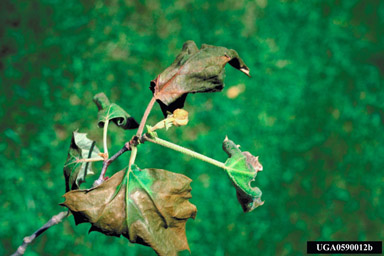Blog, Disease & Pest Prevention, What's Wrong With My Trees?
What’s wrong with my tree? Sycamore anthracnose
Sycamore anthracnose is a fungal disease
The sycamore anthracnose fungus, Apiognomonia veneta, is most commonly seen during the cool, wet weather of spring. This fungal disease twigs via petioles (the stalk that attaches the leaf blade to the stem) during the growing season and remains inactive until the tree goes into dormancy. Then, it will proceed to colonize and kill the bark and cambium (the cell layer between the wood and bast tissues) of the tree.
Signs and symptoms of sycamore anthracnose

Sycamore anthracnose is often mistaken for late spring frost damage thanks to their similar symptoms:
- Twig dieback
- Cankers on buds and twigs
- Shoot blight following a period of cold spring weather
- Leaf blight
- Foliar lesions
Treating and managing sycamore anthracnose
The best way to treat and manage sycamore anthracnose in your trees is to get in contact with the ISA-Certified Arborists at Hansen’s Tree Service. With proper management, the effects of anthracnose can be minimized and your trees can thrive once again. By removing infected leaves and branches and implementing proper fertilization, you can ensure that your trees are healthy and strong.
